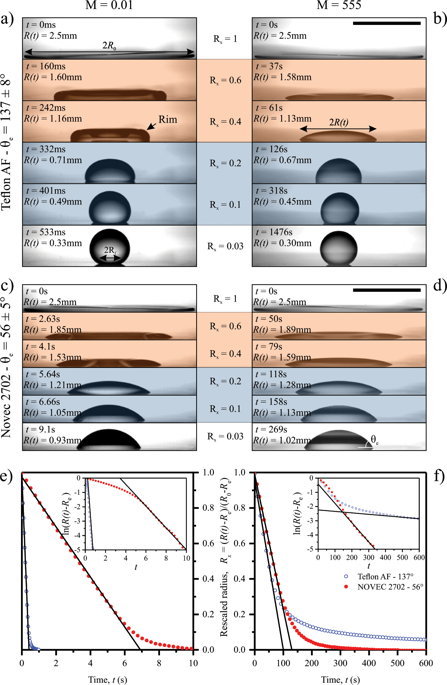Communications Physics ( IF 5.5 ) Pub Date : 2020-01-23 , DOI: 10.1038/s42005-020-0284-8 A. M. J. Edwards , R. Ledesma-Aguilar , M. I. Newton , C. V. Brown , G. McHale

|
The spontaneous dewetting of a liquid film from a solid surface occurs in many important processes, such as printing and microscale patterning. Experience suggests that dewetting occurs faster on surfaces of higher film repellency. Here, we show how, unexpectedly, a surrounding viscous phase can switch the overall dewetting speed so that films retract slower with increasing surface repellency. We present experiments and a hydrodynamic theory covering five decades of the viscosity ratio between the film and the surrounding phase. The timescale of dewetting is controlled by the geometry of the liquid-liquid interface close to the contact line and the viscosity ratio. At small viscosity ratio, dewetting is slower on low film-repellency surfaces due to a high dissipation at the edge of the receding film. This situation is reversed at high viscosity ratios, leading to a slower dewetting on high film-repellency surfaces due to the increased dissipation of the advancing surrounding phase.
中文翻译:

用于液-液脱湿的粘性开关
液膜从固体表面自然脱湿发生在许多重要过程中,例如印刷和微缩图案化。经验表明,在具有较高膜排斥性的表面上反润湿发生得更快。在这里,我们展示了出乎意料的是,周围的粘性相如何改变整体的去湿速度,从而使膜随着表面排斥性的增加而收缩得更慢。我们提出了实验和流体力学理论,涵盖了薄膜与周围相之间的五十年粘度比。去湿的时间尺度由靠近接触线的液-液界面的几何形状和粘度比控制。在低粘度比的情况下,由于在后退膜边缘的高耗散性,在低膜排斥性表面上的去湿较慢。



























 京公网安备 11010802027423号
京公网安备 11010802027423号